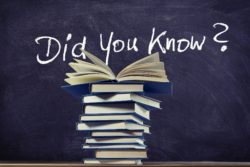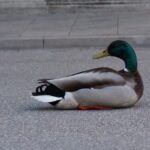
There is grammar, and then there is GRAMMAR. The three topics in today’s post aren’t in any grammar book I ever taught from or read — or wrote, for that matter! I am sure they are in some grammar book, and I am sure some of you know what they are. I actually was not acquainted with what they are called.
Bare Infinitives
An infinitive is a verb preceded by the word to: I want to leave. The infinitive is to leave. Notice that the verb in the sentence is want. An infinitive is really being used as a noun. Here, it is the object of the sentence. I want what? to leave. An infinitive can also be the subject of a sentence: To swim is my favorite hobby. Of course, we would probably say Swimming is my favorite hobby. In that sentence swimming is a noun, but it is not an infinitive. So what is the verb ending in -ing and used as a noun called?? Yup, a gerund.
Okay, so what is a bare infinitive? A bare infinitive is one without the to. We never think about them or really notice them, but when we do, we try to figure out what on earth that is in the sentence:
- I let her use my book. (We don’t say “I let her to use my book.”)
- I heard my dog bark. (not “to bark”)
- I felt the earth move.
Bare infinitives occur with certain verbs, among them let and the verbs of sense (feel, hear, see, etc.)
Question Tags
These are easy and well named. They are the little “postscripts” that might come after a statement to make it into a question. These tags are used more frequently in speaking than in writing. They “check” to make sure what you said is true. They are preceded by a comma.
- You locked the door, didn’t you?
- She is coming with us, isn’t she?
- I am getting the award, aren’t I?
Cleft Sentences
These are a bit weird. They are sentences where the word order is changed to emphasize something in the sentence. They often begin with what, all, or it.
- I need a warmer coat. (regular old sentence)
- What I need is a warmer coat. (emphasizes the warmer coat)
- It is a warmer coat that I need (emphasizes what I need)
- All I need is a warmer coat. (emphasizes once again)
Here is another example:
- I would love an ice cream cone.
- What I would love is an ice cream cone.
- An ice cream cone is what I would love.
- It is an ice cream cone that I really would love.
So now we know!



Another great post. Thanks
Thanks so much!!!
I laughed at Dave’s comment and Arlene’s response.
My comment: “being pedantic” doesn’t sell as well as Grammar Diva!
Thanks for a laughing moment on Monday.
You are very welcome. Happy to make you laugh!
Hi, there!
We are very good friends of the bare infinitive and cleft sentences when we teach advanced students, especially cleft sentences and their siblings: inversion, fronting, and auxiliary verbs in affirmative sentences, whenever we want to teach emphatic structures. Question tags, though, are more usual visitors in pre-intermediate classes.
Thanks for sharing
Alejandra
Thanks so much for the comment. I taught 7th grade, where we had other problems, like capitalizing the I pronoun!!!
Interesting and informative post, as usual, Arlene. Reading it, I noticed one other thing often used and rarely noted. The phrase “aren’t I” uses a negative contraction for “am I not,” but the verb form is plural rather than singular. Where’d that come from?
Excellent catch! Am I not is grammatically correct, but has become very formal, while aren’t I, although apparently grammatically incorrect, is “correct” in informal use. Go figure!
And Am’t I is just too hard to say!
Well now, all of that was very pedantic.
Pedantic is my middle name! LOL